A Marathi proverb [gyan]
Do not look for the source of a river
nor the ancestry of a rishi
per: Water and Womanhood ... Maharashtra (1995)
notes begun impromptu / but likely to find form / or after a fashion haunt you
Do not look for the source of a river
nor the ancestry of a rishi
(Gayatri Chakravorty Spivak, in her essay "'Breast-giver': for author, reader, teacher, subaltern, historian," in Mahasweta Devi, Breast Stories (1997))
That history deals with real events and literature with imagined ones may now be seen as a difference in degree rather than in kind.
Travel to Dakshineswar is easy by taxi or by Metro to Dum Dum then cycle-rickshaw (neither avoids the noise and pollution but the latter does minimise it). The best way by far is boat to/from Belur ghat but you still have to take a taxi to/from Belur. And finally, on the basis of harsh experience, never go anywhere without a supply of toilet paper.I definitely like the boat idea! He also notes that there is
no guide book for visitors to the Ramakrishna sites although the book 'Sri Ramakrishna's Dakshineswar' by the Ramakrishna Sarada Mission, Delhi, is extremely useful.
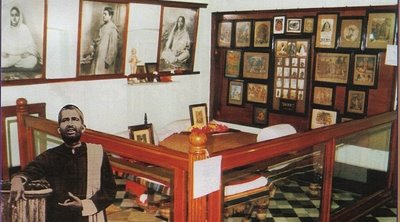
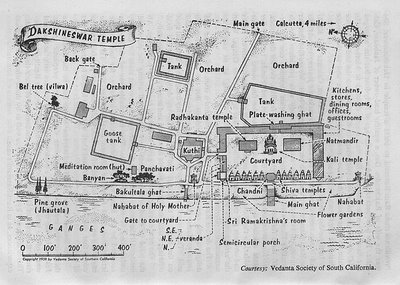
Many 20-something Europeans are heading to India to give their careers a kick start. “Eastward-Bound” tells why U.S. and Asian expats may soon follow.-- but the article's not available online right now (sans rigamarole). Perhaps I'll have to fend for meself, lacking cutting-edge rumor. :-)
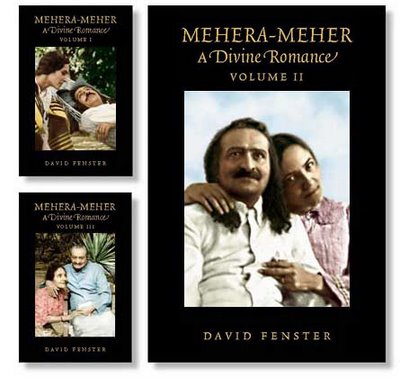 This just in: David Fenster, painstaking scholar-author of the significant dual-biography Mehera-Meher (chronicling the linked lives of Mehera J. Irani and Merwan Sheriar Irani a.k.a. Meher Baba) has launched a website:
This just in: David Fenster, painstaking scholar-author of the significant dual-biography Mehera-Meher (chronicling the linked lives of Mehera J. Irani and Merwan Sheriar Irani a.k.a. Meher Baba) has launched a website:
The first educational venture of Western unprogrammed Friends was Pacific Ackworth School. This alternative school was founded in 1942 because Friends felt that children in the public schools were being pressured to support the war. John and Alice Way , along with several other Orange Grove Meeting families, purchased five acres of property in Temple City, California (not far from Pasadena). The Ways moved a house to the property and settled there in early 1942. [etc.]Those five acres were the world for us, for a stretch of years.

You might call this a parlor game
(at least we know the sitter's name)
we might not know the where and when --
to know not who would be a shame
I think success would be to have a large independent income and do nothing at all. Not even stare at one's feet. Just sit in a bathtub all day pretending to be dead with eyes closed and ears plugged, and the water at skin tem,perature so you can't even feel it.
Given that that is next to impossible, the closest thing to it would be an ideal academic job: a chair of nothingness at nothing state university in nothingsville.
Now that would be something!
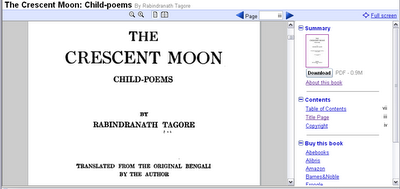
From Jan 2006, the low cost airline JetStarAsia will fly between Bangalore and Singapore five times a week.Indeed, on dates that there are flights, one finds a "JetSaver" rate circa $179 (1-way) from Singapore to Bangalore (nonrefundable; $30 charge if changing date of flight). At the moment, I find these dates & rates:
MEHER BABA UNIVERSAL SPIRITUAL CENTRE,(per this list)
Byramangala, Abbanakuppe Village, Ittamadu Post,
Bidadi Hobli, Ramangaram Taluk,
Bangalore 560109 Karnataka.
(Mr.V.Deva Rao - 080-27202160, +919880311569)
Monthly Program, Every Second Sunday - 10.30 AM to 12.30 PM1.
Days of service M,W,Th,Su(ergo, arriving Bhopal evening of Monday, January 15th -- presumably by around 8pm)
Bangalore (Dep) 18.35
Secunderabad (Dep) 06.55
Nagpur (Dep) 15.10
Bhopal (Dep) 20.50
The Samadhi of Sadguru Shri Narayan Maharaj is at Bangalore at the following address / location which you may like to visit to take the Darshan:-- per detailed webpage about Narayan Maharaj.
Sri Bet Narayan Maharaj ashram and Brindavan
No 70, Gavi gangadhareshwara circle
Gavipura, Kempe gowda nagar
Bangalore - 19 (Karnataka) India
(It is opposite to Gavigangadhareshwara cave temple (1 kms from Bull temple) and near a lake called Kempambudhi tank.)
Aadmi Aadmi-se milta hai
Dil magar kam kisi-se milta hai
Bhool jaataa hun mein sitam uske
Voh kuchh iss saadgi-se milta hai
Aaj kyaa baat hai ki phoolon ka
Rang teri hansi se milta hai
Mil ke bhi joh kabhi nahin miltaa
Toot kar il us-hi-se miltaa hai
This one reads well, d.i.The above poem is by way of reply to those remarks.
One small nitpick though -can you rephrase the whole ghazal with slightly shorter lines please?
The lyricism of ghazal shines out like a nova, when it is compact, for instance some of the tersely worded ghazals by Jigar Muradabadi, or even Ghalib at times.
The import does get diluted with longer lines. The profusion of words, distracts the wisdom seeker, as it were.
Pray enlighten this moron with genesis of Ardeo, a nom de plume you have used since long.
Hunar khilta sada hai sadgi se
Gazal ka rabt hai deevangise
panapte hain kawal dal dal me yaaro
Guhar chupte nahin hai aadmi se
At the present juncture in Dhrupad's history, it is not cynical, but realistic, to analyze Dhrupad primarily as a response to a "market". The genre will merit examination afresh when, and if, it attains the stage of delivering an abundant supply of quality musicianship.At any rate, I found these paragraphs interesting:
From a contemporary perspective, the feasibility of a Dhrupad revival owes a great deal to the towering duo, Ustad Nasir Ameenuddin and Ustad Nasir Moinuddin Dagar. They demonstrated the value of what Indian music was about to lose, perhaps irretrievably. But for their legacy, Indian society might not have mustered the will and the resources to initiate revivalist movements.The website presenting this essay is called Ragascape -- including a musical archive as well as this section of essays (including, for instance, Deepak Raja's good essay, More about the Surbahar).
Their recordings remain, to this day, the most powerful testimony available to the maturity and sophistication of the genre. Their formidable musicianship remains a durable challenge for all vocalists -- Dhrupadiyas as well as Khayaliyas. Their music also earned for them the admiration of serious musicologists in Europe, who helped to create an international constituency not only for Dhrupad, but for all of Hindustani music.
The departure of the Elder Dagar Brothers from the concert platform created the conditions for Dhrupad enthusiasts to clamor for revivalist initiatives. Two significant initiatives, each qualitatively different from the other, are noteworthy. Both of them have attempted to extend the boundaries of musicianship in Dhrupad beyond heredity.
The Bhopal initiative was spearheaded and funded by a state government, with pedagogical and stylistic inputs from one of the streams of the Dagar tradition. In contrast, the Brindaban movement was initiated and funded by the hereditary clergy of a Vaishnava denomination, and functions under the guidance of another reputed Dhrupad lineage, the Mallik family from Darbhanga in Bihar.
The Bhopal initiative has attracted good talent, and so far trained about twenty Dhrupad musicians, of whom a handful are now established concert performers. In terms of its sustainability, this initiative faces two major uncertainties -- the uncertainties associated with all government supported cultural projects, and the scarcity of competent and dedicated Gurus.
The Brindaban movement's contribution to musicianship has been comparatively modest. However, it has utilized the growing interest in the culture of the Vraja region and its Vaishnava cults, to promote the hitherto lesser known Darbhanga gharana.of Dhrupad. The movement claims significance also on account of having restored Dhrupad's link with its original home in the Vaishnava temples. From available evidence, this link appears tenuous, and its long-term value to either Haveli Sangeet or to classical Dhrupad is debatable.
Neither of these establishments has been around long enough to bring Dhrupad to a state of self-generating growth. Dhrupad requires superior momentum to reach such a stage. This will probably come from the future role of the alumni of these establishments as teachers and performers, and the continued growth in Dhrupad's popularity with audiences.
In general appearance and structure, the vichitra veena is very similar to the northern bin or veena. For an instrument so young, it is fairly widespread. The main difference between the northern veena and the vichitra veena is that the former is a fretted instrument with a bamboo stem while the vichitra veena has a much broader and stronger wooden stem without frets which can accommodate the large number of main and sympathetic strings. This hollow stem, about three feet long and about six inches wide, with a flattop and a rounded bottom, is placed on two large gourds about a foot and a half in diameter. An ivory bridge covering the entire width of the stem is placed at one end. Six main strings made of brass and steel run the whole length of the stem and are fastened to wooden pegs fixed to the other end.Mustafa Raza's vichitravina.com site may also be noted. He is said to play "khayal gayaki style." His father was Ustad Ahmed Raza (who was a student of Ustad Abdul Aziz Khan). Some interesting remarks about the instrument found there include:
The vichitra veena has about twelve sympathetic strings of varying lengths which run parallel to and under the main strings. They are usually tuned to reproduce the scale of the raga which is being played.
The vichitra veena is played by means of wire plectums (mizrabs) worn on the fingers of the right hand which pluck the strings near the bridge. The notes are stopped with a piece of rounded glass, rather like a paper weight. The musician slides the glass piece from one note to another over the strings by holding it in his left hand. It is rather difficult to play fast passages on the vichitra veena but slow passages emerge on this instrument with a beauty and richness of tone which few other instruments possess.
The obvious disadvantage of this instrument is that a paper weight can never do what human fingers can. And so, some of the delicate graces and embellishments in very fast passages have to be sacrificed. The vichitra veena has these advantages in common with the gottuvadyam of the south.
It is said that the Vichitra veena was introduced by the late Ustad Abdul Aziz Khan who was a court musician at Indore. In fashioning the instrument, Ustad Abdul Aziz Khan, during his musical contacts with the south, probably took his ideas from the southern gottuvadyam which was already popular.
Vichiter Veena's ancient name is Shiv Veena. It is also known previously in different names -- Shutri Veena, Tantra Veena, Batta Veena etc. But today it is known as Vichiter Veena. Ustad Abdul Aziz Khan of Patiala family has given a new life to this instrument. Vichiter Veena is believed to be a divine instrument and the music produced through it always devoted to the absolute. The Veena has the distinction of being the only plucked instrument that is considered to be the purest musical sound and by legend is the foundation of all art.Dr. Raza is also amusingly quoted in one press clipping: "You can learn the sitar in a year or two, you make more money with it too so why should any one spend six years learning the Vichitra Veena?"
The Vichiter Veena has four main strings three front side supporting strings and along with two chikaris, 15th Tarabs (resonance strings) having a range of three and half octaves. Resonance strings confine a player to "pure" or "perfect" note as they themselves are tuned on "perfect"....
From 1944, he began to be influenced by the Batta Bin of Ustad Abdul Aziz Khan of Patiala. Around 1946, he came to the realization that the Veena is primarily a Hindu devotional instrument. The responsibility of preserving its tradition lay primarily with Hindu artists. If the Hindu tradition that had survived due to the efforts of Muslim musicians now disappeared, the responsibility for its demise would lie with Hindu artists. Therefore, he learned to play Veena in the traditional manner from Abdul Aziz Khan and began his practice in secret.My question include: what is that Batta Vina of Abdul Aziz Khan? And what is this about Lalmani Misra "creat[ing] a Veena on which all the exercises in Bharat’s Sarana Chatushtadi could be played, and the 22 shrutis recorded by Bharat could be heard and played"? Does this suggest that he MODIFIED the Vichitra Vina? If that's the meaning, then one should wish to know about those who may build instruments on his model.
In 1950, on the invitation of Dr. Ratanjankar to the Bhatkhande Jayanti in Lakhnau’s Morris College, he performed on the Vichitra Veena for the first time. Encouraged by the response of the artists and connoisseurs in the audience, he made the Vichitra Veena his primary instrument.
In 1946, Lalmani Misra established the Kanpur Orchestral Society, and created many compositions. He composed music for plays, as well as directed several of them. In 1947, together with close associates he founded the Bharatiya Sangeet Parishad in Kanpur; under its auspices the Gandhi Sangeet Mahavidyalaya was established on August 16, 1947. He resigned from Kanyakubja College to dedicate his full attention to the new institution.
In 1951, the world renowned dance maestro Uday Shankar appointed him the music director of his troupe. Lalmani Misra was just 27. In 1951 and 1954, with Uday Shankar’s troupe, he toured countries like Sri Lanka, England, France, Belgium, America, and Canada, to very favorable reviews of his music direction and Veena concerts. A Hollywood film company invited him to help make an Indian film. Not used to the atmosphere in the West, he turned the offer down. After returning to India, he was asked to compose music for Hindi films. But his interest in music scholarship and teaching pulled him back to Kanpur. In the course of his world travels, he came to realize that musicians require higher education as well. He went on to receive a Sahitya Ratna, an M.A. from Agra University, and a Ph.D. from Kashi Hindu Vishwavidyalaya.
In 1955, in his capacity as the first Registrar of the Akhil Bharatiya Vandharva Mahavidyalaya Mandal, he organized the work of the institution. But the growing demands of the job took him away from his music practice, and he gave up his duties at the Mandal. At the urging of friends, he became Principal of Gandhi Sangeet Mahavidyalaya in 1957. Sangeet Martand Omkarnath Thakur wanted him to join the Music Department at Kashi Hindu Vishwavidyalaya. After much persuasion, he agreed to leave Kanpur for Varanasi, and joined the Instrumental Department as Reader in 1958, believing that it was not the title but the work that brought greatness to an artist.
He made many major advances in the field of music instruction at Kashi Hindu Vishwavidyalaya. After intense effort, he created a Veena on which all the exercises in Bharat’s Sarana Chatushtadi could be played, and the 22 shrutis recorded by Bharat could be heard and played. After hearing these shrutis on his Veena, Indian and Western scholars alike praised his achievement.
He studied both academically and empirically Indian instruments of the ancient, medieval, and modern eras, and proved that Amir Khusro had nothing to do with the evolution of the Sitar and the Tabla. The sitar evolved naturally from the ancient Tritantriya Veena, and Tabla from the Pushkar Vadya. The modern Sarod and medieval Sursingar and Rabab are evolved forms of the ancient Chitra Veena. His research findings in the field of music created a sensation, and debunked many commonly accepted myths.
Lalmani Misra helped create and reform the syllabi of prominent educational institutions and universities. Having created many instruments, he demonstrated them to the public. After the publication of material for smaller classes, he started work on books on Vedic music and the Sitar, but could not complete them due to poor health.
Lalmani Misra is one of those seminal artists of the music world who excelled as a performer, critic, and scholar. According to him, India has two types of scholars: academic and empirical. The empirical scholar is the one that tests ancient principles on the platform of contemporary music, and puts his faith in its growth and evolution. On the other hand, the academic scholar worships tradition at the cost of new currents in art, and wants the artist to retreat in the past rather than look forward.
Lalmani Misra was working on specific research, such as Vedic music, the rebirth of dhruvapad-dhamar, and the promotion of instrumental music, when he suddenly took ill. At the age of 55, on July 17, 1979, he left the music world and ended his tenure on earth prematurely.
The second half of the evening carried the audience into realm of further abstraction. Shahid Parvez, on the verge of being a legend, revealed all on his magical Sitar. Bageshri was the vehicle for demonstration of his skill, this evening. During the Alaap itself, he fascinated one and all with his Meend work. Enticing and amazing, while it succeeded in riveting the attention of the audience, the deft display did little to maintain the mood of the Raga. The slow and rapid compositions were both in Teen Taal and the medium paced composition was in Ek Taal. He brought the evening to a reluctant close with a rendering of a Bhairavi Gat composed in Addha Taal. Even though the compositions were different, the style could easily be discerned as that of his mentor and uncle, Ustaad Vilayat Khan. With a perfect accompaniment on Tabla by Mukesh Jadhav, Shahid could well involve the audience and transport them; he could also break the charm and make them evaluate his effortless mastery over the instrument without any undue influence. Such a practice might bode ill for ancient aesthetics, but it certainly goes a long way in garnering support for Indian Classical Music in its own fashion.-- from her review in ArtScape.
For the today's musician, in Damascus today, in New York a couple of days later, travelling with large instruments with two resonators like the veena can be a nightmare. Vainika Suma Sudhindra of Karnataka has invented a new instrument named Tarangini — one that is compact, light, weather resistant and travels well. Sruti stability, ensured by guitar keys, does away with the pegs of the veena. The acoustic resonator of the conventional veena is replaced by a magnetic pickup and the hind resonator made of fibreglass can be unscrewed and packed away separately! But its music sounds more like the electric guitar. Some instruments, it would seem, will not be easily substituted.Yet another interesting point made is this:
Teak forests are no longer plentiful and other types of wood have to be used for making musical instruments. Raw material like bone and ivory are no longer easily available and substitutes are being experimented with. Ravi Kiran, the chitra veena expert recounting his experience with the instrument, said that after trying out many metals for the slide bar called gottu used to glide on the strings, he now uses a Teflon side bar, which is smooth and easy to wield.The article concludes with this anecdotal flourish:
Gopal Krishnan [sic; Krishan], the vichitra veena maestro, was jailed during the British Raj. He mesmerised the hardened criminals in his cell with music played on ektara, the only instrument he was allowed to take with him. He played it like a veena and his live demonstration during the symposium floored all with its undiluted sweetness./ / / / /
The vichitra veena has nine to eleven main strings and eleven to fifteen sympathetic strings. The number of strings (main as well as sympathetic), their tuning system and their gauge vary from artist to artist.The author then follows that up with an interesting but mildly absurd remark --
The vichitra veena is played with the help of a small egg- shaped glass, called batta, which looks like a paper weight (although it is bigger than a paper weight), held in the left hand and made to slide upon the strings. In the right hand, the artist wears sitar-like plectrums on the index and middle fingers. Some artists wear a small plectrum on the small finger as well to facilitate playing the drone strings.
Because of various reasons the instrument is now losing its popularity among the younger generation of artists. The introduction of the slide guitar, a popular western instrument, to Hindustani classical music is one of the principal reasons for its decline.(Evidently these notes, generally good, are drawn from a certain Suneera Kasliwal, Classical Musical Instruments, Delhi (2001))
If it was Rosebud that haunted Citizen Kane all his life, it was nectar of honey-buds, which sweetened the notes of that ancient instrument, whenever the maestro caressed it. Vedic Bana, called Brahmaveena, Ghoshvati or Ektantri Veena in ninth century AD is known today as Vichitra Veena. When one comes to learn that Madhukali [sliver of honey?] is an organisation dedicated to the memory of internationally renowned Vichitra-veena player Sangeetendu Dr. Lalmani Misra, he ceases to wonder why such great masters as Pt. Ravishankar, Pt. Hariprasad Chourasia, Pt. Shivkumar Sharma, Ustad Zia Fariddudin Dagar, Dr. N. Rajam, Pt. Rajan & Sajan Mishra have accorded their patronage and unreserved support to it. Named after one of the Raga-s this avid scholar created, Madhukali is also the name of the choral group that in the past fifteen years has established the joy and power of group-singing. Madhukali Vrind performed with probably the largest group ever, which included almost 5,000 children in 1986. By picking up choicest poetry of traditional and modern poets, Madhukali Vrind has created awareness in the young generation for the form of Vrindagana, as well as good poetry throughout Madhya Pradesh.
An international group of ecologists and economists warned yesterday that the world will run out of seafood by 2048 if steep declines in marine species continue at current rates, based on a four-year study of catch data and the effects of fisheries collapses....
-- World's Fish Supply Running Out, Researchers Warn (front page, Washington Post, November 3, 2006)
Regular flights connect Bhopal with Delhi, Gwalior, Indore and Mumbai.Maps of India
Bhopal is an important railway station, as it is on the main Delhi-Madras route.
The Chennai Rajdhani covers a distance of 2194 kilometers in just over 28 hours. It is one of the fastest trains in India. It departs from Delhi at 1530 and arrives in Chennai at 2000 the next day. From Chennai it departs at 0620 and arrives in Delhi at 1100 the next day. It is an important train and is a wonderful and fast substitute to the overbooked GT and TN expresses.
Train No. 2429: Bangalore - Nizamuddin [Table No. 9a = pdf]So this is the Bangalore Nizamuddin Rajdhani Express. Via this route, the distance from Bangalore to Bhopal is 1760 km (1,094 miles).
Days of service M,W,Th,Su
Bangalore (Dep) 18.35
Secunderabad (Dep) 06.55
Nagpur (Dep) 15.10
Bhopal (Dep) 20.50
Nizamuddin (Arr) 05.15
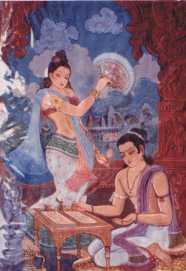

The complete Solvyns etchings--250 from the Calcutta edition; 60 plates from the pirated Orme edition; and 292 etchings from Les Hindoûs--are here reproduced online following the organization of Robert L. Hardgrave, Jr., A Portrait of the Hindus: Balthazar Solvyns & the European Image of India 1760-1824 (Oxford University Press and Mapin Publishing, 2004).-- from The Etchings Online
Written July 5-10, 2006, this narrative cycle (a fabulistic ballad), divided into 16 sections, is comprised of 64 quatrains in all.The above little poem (in terza rima) will now serve as the poem-cycle's Prologue. This, then, fully completes the cycle.